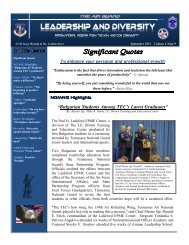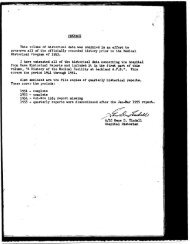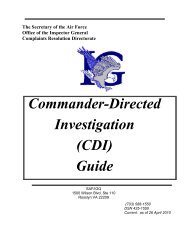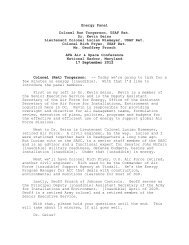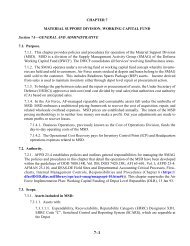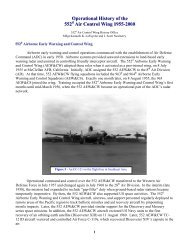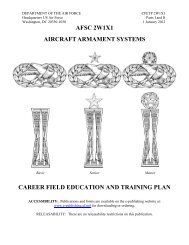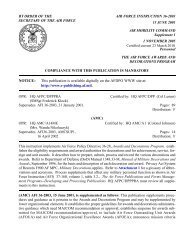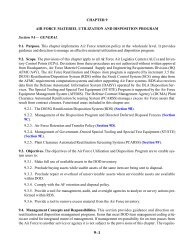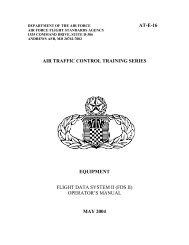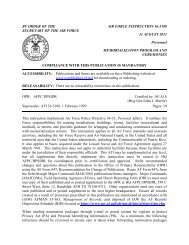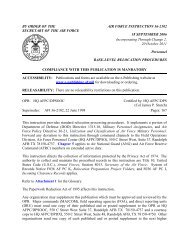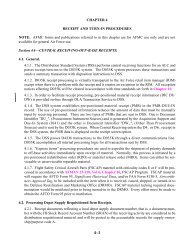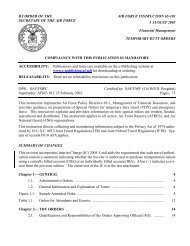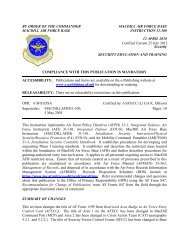CONTRAILS FACTS - Air Force Link
CONTRAILS FACTS - Air Force Link
CONTRAILS FACTS - Air Force Link
- TAGS
- contrails
- link
- www.af.mil
You also want an ePaper? Increase the reach of your titles
YUMPU automatically turns print PDFs into web optimized ePapers that Google loves.
pyrotechnic candle consumes the flare housing. Common aerial flares are: ALA-17/B, M-206,<br />
MJU-2, MJU-7 A/B, MJU-10/B, MJU-23/B, and RR-119.<br />
Ground illumination flares, are designed to descend by parachute and provide up to 30 minutes<br />
of illumination of ground targets or activities. Typical flares are the LUU-1, LLU-5, and LLU-2B.<br />
A typical LLU-2B sectional is shown below.<br />
The ground illumination flare enhances a pilot's ability to see targets while using Night Vision<br />
Goggles (NVGs). Flares burn at uneven rates and fluctuate in brightness and are not used as<br />
frequently as in the past as the intense light interferes with the newer NVGs more sensitive<br />
sensors.<br />
The composition and materials of flares used by the military are similar to standard flares used<br />
for aerial, highway and marine purposes. (Skyline). While unburned decoy flares falling from<br />
high altitude could be dangerous, flares are designed to burn up during the descent (even the<br />
aluminum casing is burned).<br />
Chaff and flares are deployed on most <strong>Air</strong> <strong>Force</strong> aircraft from a common MJU-11 Chaff/Flare<br />
magazine that is integrated with the warning receiver (a device that alerts the aircraft a missile<br />
has locked onto the aircraft). The magazine has a capacity of 30 RR-188 or 30 M-206 flares.<br />
A very thorough independent description of military systems, equipment, and capabilities is<br />
published by the American Federation of Scientists.<br />
Typical chaff and flare deployments and patterns are shown in the following pictures.



